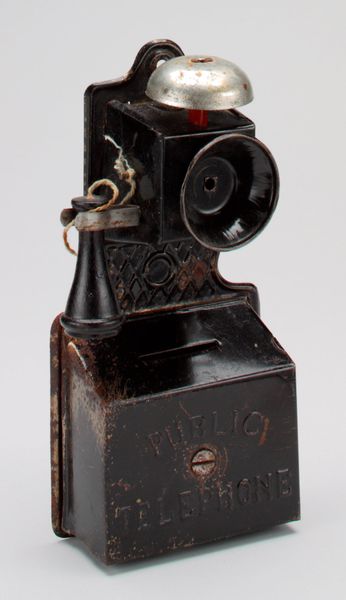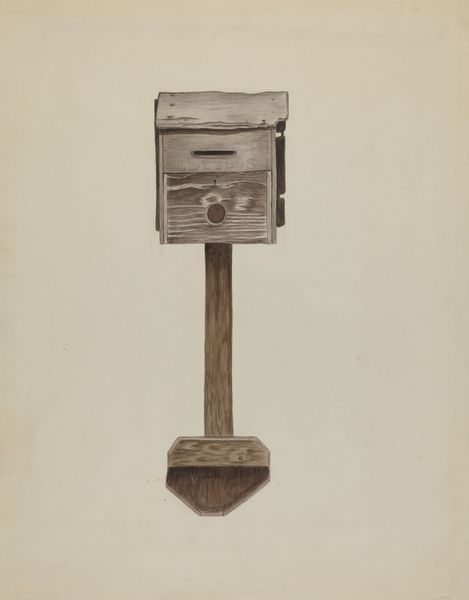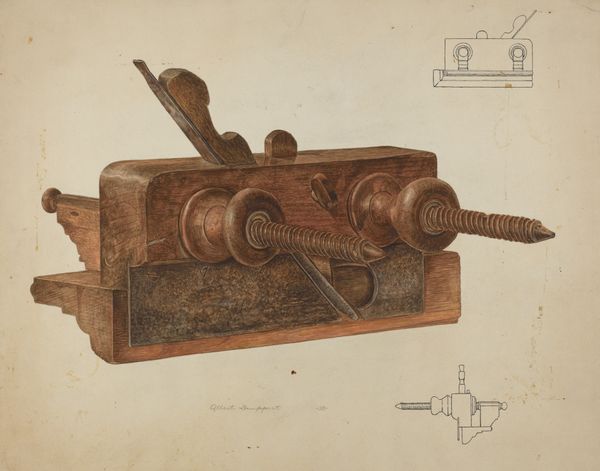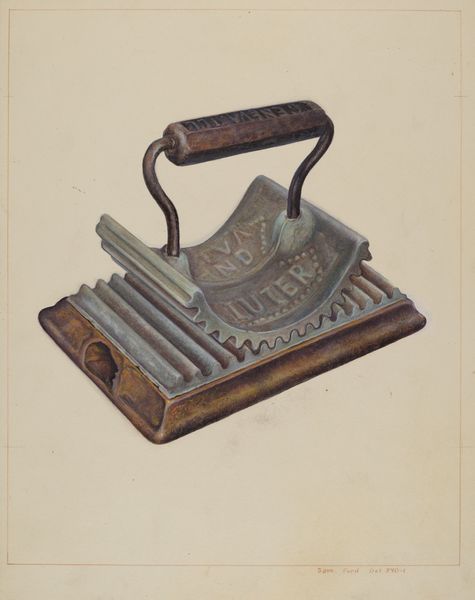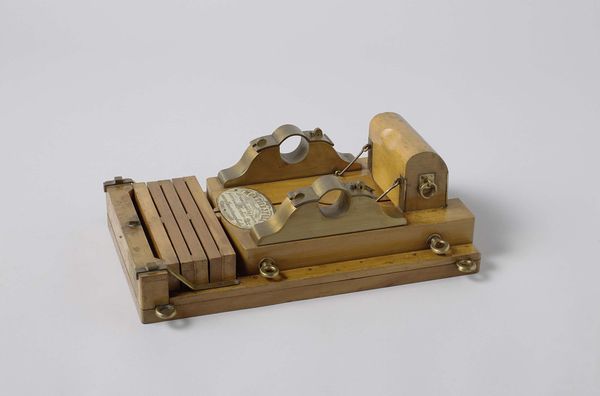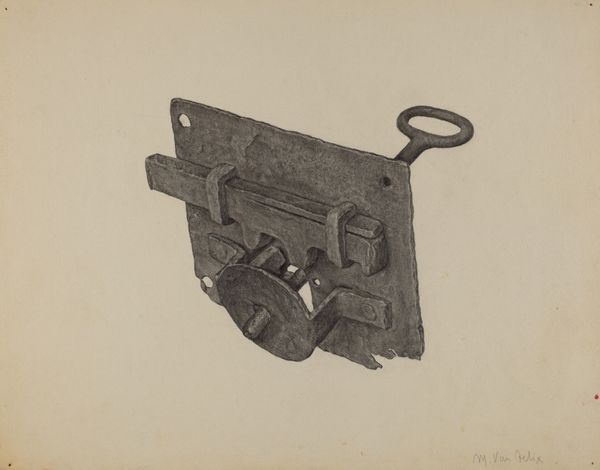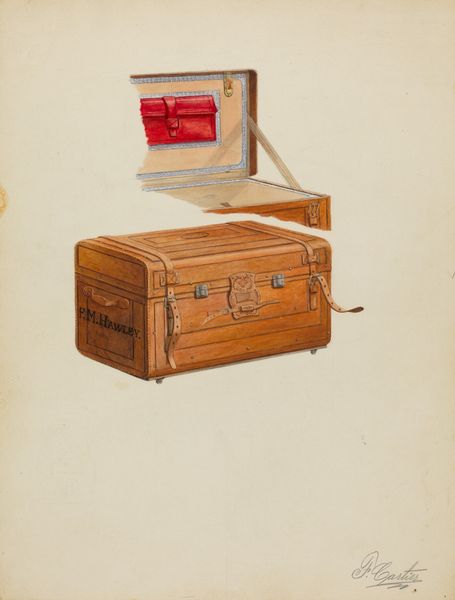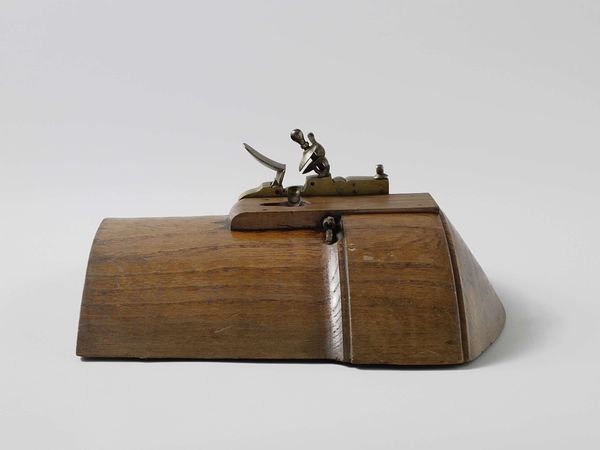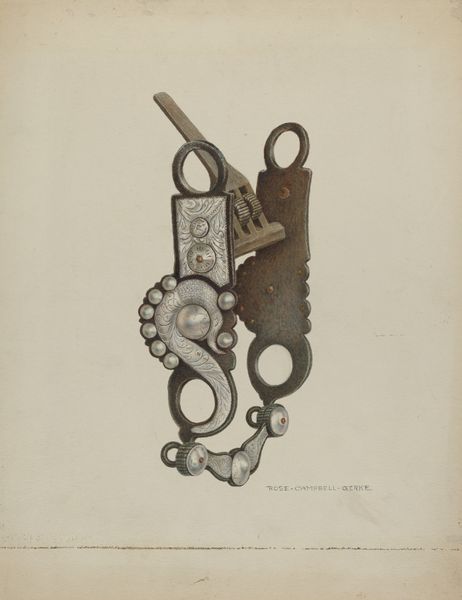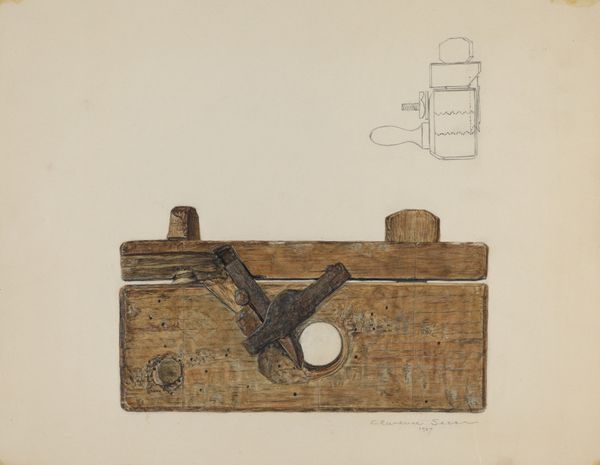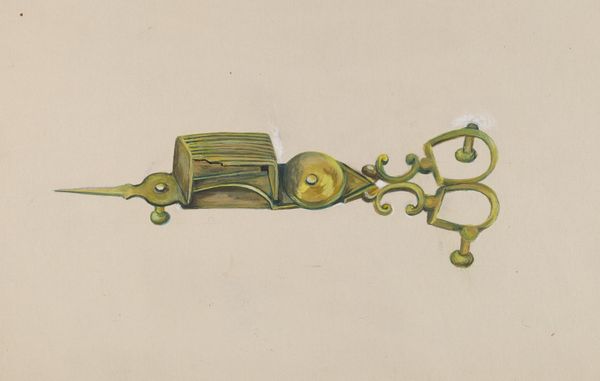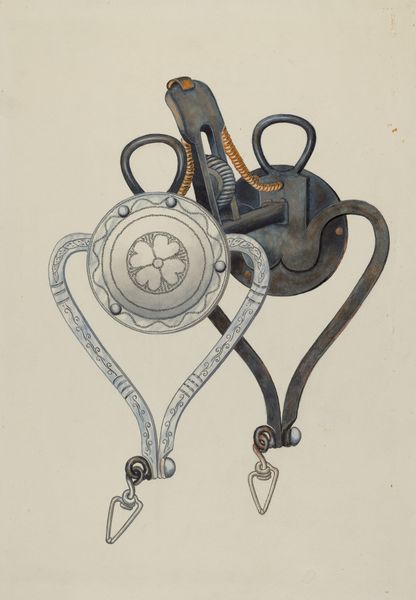
Leporelloalbum in de vorm van een camera met 24 fotomechanische afdrukken van stadsgezichten in Londen 1888 - 1914
0:00
0:00
graphic-art, lithograph, print, photography, poster
#
graphic-art
#
art-nouveau
#
lithograph
# print
#
photography
#
19th century
#
poster
Dimensions: height 110 mm, width 89 mm, width 179 mm
Copyright: Rijks Museum: Open Domain
Curator: I’m struck by the sheer novelty of this object. Here we have a "Leporelloalbum in de vorm van een camera met 24 fotomechanische afdrukken van stadsgezichten in Londen," dating roughly from 1888 to 1914. It’s a concertina-style album, printed with images of London, shaped like a camera itself. The cleverness of that design is the first thing that comes to mind. Editor: The materiality is also interesting—the merging of photography, graphic art, and Art Nouveau aesthetics. It speaks volumes about the means of production. It was "designed in England, printed at the works in Germany," according to the fine print at the bottom. That international division of labor is quite revealing about manufacturing processes during that period, don't you think? Curator: Absolutely. And think about the accessibility this object provided. While photography democratized portraiture, this object took it a step further. It placed a pocket-sized version of London into people’s hands, offering a mediated experience of the city itself. Consider the social and economic implications, and its role in shaping perceptions of place and travel. Editor: It makes me consider the gaze, really. The colonial gaze, the tourist gaze. Who was this camera-album meant for? Who was consuming these images of London, and what were their backgrounds? Were they locals? Or were these souvenirs marketed to visitors from the colonies who may or may not had returned back to the capital to have this "artifact". Curator: And how did they internalize the power structures reflected in those views? By recreating such scenes with a hand-held camera object one might internalize certain imperial relationships as well? Editor: Perhaps. On a purely technical note, the Art Nouveau influences add another layer. The typography, the stylized rendering of the camera, the overall aesthetic sensibility—it all points to a deliberate blurring of lines between mass production and artistic design, making it clear this was mass distributed beyond local consumption. Curator: Looking closer I think, beyond merely the "artistic," such decisions about material form played a significant role in cultural perception by framing a place, especially through design. Such form factors in themselves could provide and enforce cultural authority over an artistic commodity. Editor: Precisely. These camera-shaped albums weren't simply reflecting reality, but actively constructing a particular version of it. They are, ultimately, artifacts of their time that embody power structures and design relationships. I'm curious to do more research and situate what are the economic interests were at that specific location as this period took place in a brief time lapse right before world war I started in the west. Curator: So true; and this particular artwork provides more insights through an unassuming format!
Comments
No comments
Be the first to comment and join the conversation on the ultimate creative platform.
